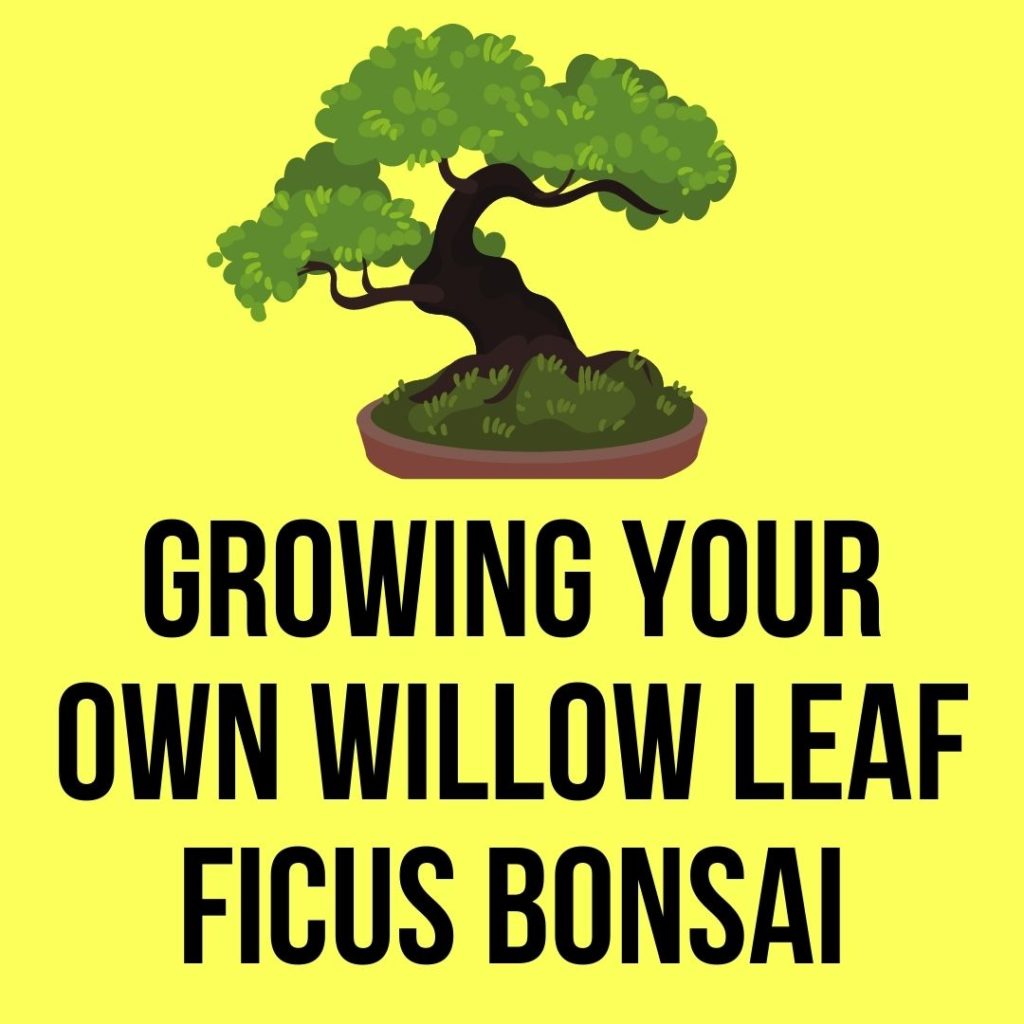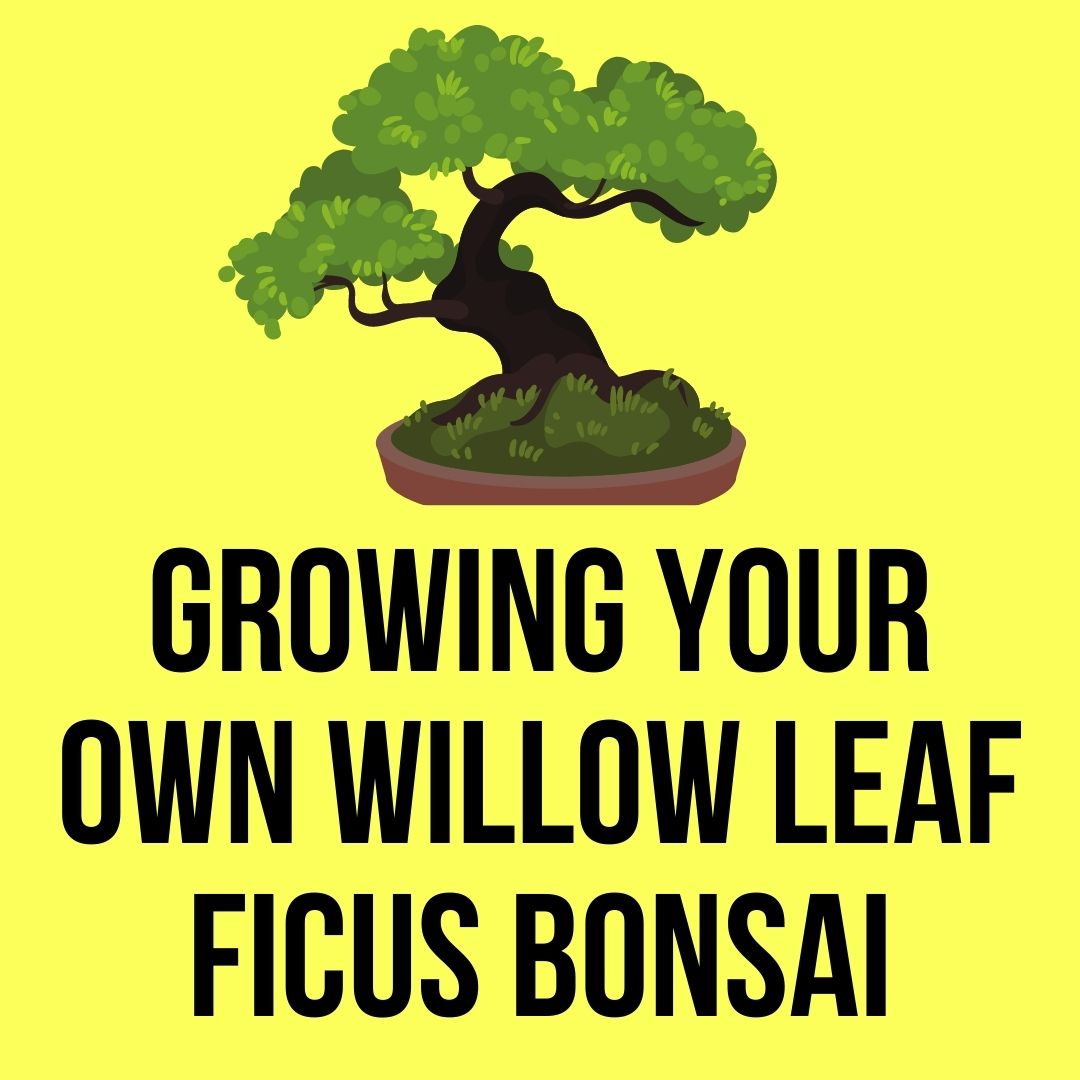Willow leaf ficus, named roughly after the Weeping Willow, is famously hardy and beginner-friendly. The reason for it being a spectacular starter to your bonsai journey is its adaptability. The Willow Leaf has a unique brownish-grey trunk and narrow, pointed leaves. The unusual, dull shade of the trunk makes for a striking contrast with the bright green leaves, which many adore.
Today we will tell you the exact steps to grow Willow Leaf Ficus Bonsai.
This type of plant is excellent for making bonsai out of it. Bonsai, derived from the Chinese practice, Penzai, is an artificially dwarfed plant shaped to create art. It’s an ancient practice dated all the way back to the 6th BC in Japan. Just about any plant can be made into Bonsai with varying degrees of skill and knowledge.
Willow Leaf Ficus Bonsai
There are different ways to start a bonsai including propagation, seeding, with a bonsai starter, etc. Seeding can be a lengthy process, which is not recommended. Depending on the care, potting, placement, etc. there might be no plant at all.
Bonsai can be any tree but in miniature form. They require almost the same amount of care as their full-size counterparts. Like any other tree, they also grow in beauty as they age. Few things calm the heart and please the eyes like a well-crafted bonsai, especially one tended to by your own hands.

Placement
The Willow Leaf Ficus and similar plants are considered tropical or subtropical. They enjoy hot and humid climates and thrive in ample sunlight. Since they are known for indoor growing, keeping them inside will mostly not affect their health, unless your climate is unsuitably cold. They are not one to enjoy the cold or freezing weather.
They love direct sunlight. The best environment for your bonsai varies from season to season, but the most important thing to consider is when the temperature goes above or below 15-35 degrees Celsius (60-95 degrees Fahrenheit). In which case, bring the bonsai inside to protect it.
It is recommended to keep your bonsai indoors during chillier times. The plant can be placed on a windowsill facing the south or a similar area with abundant sunlight.
People tend to think bonsai don’t need much sunlight since they are minis, this misconception, however, may cost your bonsai its life. Your bonsai needs at least 4 to 6 hours of sunlight a day and anything less too often will cause withering and droopiness.
Watering
The subtropical plant requires a healthy dose of water. The Willow Ficus enjoys hot and humid conditions. You will need to water it according to your climate i.e. dryer weather means more water. Be sure to avoid dry soil at all costs.
After pouring some water, wait a minute, and pour again.
Your bonsai will not appreciate insufficient water and you will soon see its consequence. The leaves will lose color, become dry, and fall off. To prevent this, water your bonsai thoroughly until water leaks out of the drainage holes of your pot.
The watering routine will vary based on regional factors. Take into account the humidity in your area to avoid overwatering your bonsai. Some factors to consider are whether it is an indoor or outdoor bonsai, humidity, and direct or indirect sunlight.
For people in dry climates, you might want to put down a humidity tray for moisture control to make up for the shortage in the air. Set up a tray with gravel to put your pot on and pour water. Your tree is sure to appreciate the extra moisture from the tray.
You will most likely need to mist your indoor bonsai once or twice a week. This will help keep the leaves moist and clean from dust accumulated around the house.
Soil and Fertiliser
Normal potting soil works perfectly for bonsai. Its pH level should be a good neutral, anywhere from pH 6.5 to 7.5 is ideal. You might want to add vermiculite with peat moss for a moister environment as it promotes root growth. This is especially helpful for those interested in stylizing the roots.
You may use liquid fertilizer once every two or three weeks while watering. Make sure your fertilizer is diluted to no less than half of its strength as it can damage the bonsai. You can tell you have over-fertilized if the leaves are wilting or browning. They will also begin to drop around the lower areas of the tree.
Training
Proper training is what helps bonsai trees maintain their miniature size. Many bonsai starters come trained and ready, but you will need to train and stylize your propagated or seeded plant. This is called wiring. Bonsai artists use wires made of specific materials to suit the individual categories.
A deciduous ficus will require aluminum wire while annealed copper is best for other species. Beginners work best with anodized aluminum wire for styling their bonsai, which is also ideal for the Willow Leaf.
Choosing appropriate wiring and its placement is crucial as it decides the overall appearance and direction of your bonsai. Wires are wrapped around the trunk and branches to shape the tree in a desired position or form.
The goal of doing this is to make young trees appear developed and mature. This process can last a couple of years. You may remove the wiring once the manipulated parts have solidified. A point to note with softer wood is that it might lose shape and will require rewiring to hold its position.
Although you can wire your bonsai at any time of the year, the growing season is ideal since the cracks and damage to the plant from bending and twisting heal much faster during this time.
Be sure to wire your bonsai from the bottom up. The wire should be wrapped tight, avoiding too much pressure. You must also observe the bonsai regularly to ensure the tree hasn’t grown past its wire. In which case, unwire immediately.
Before wiring, remove dangling growth and lower branches that obstruct the view of the trunk.
Pruning and Trimming
A subcategory of training, pruning comes in two types: Maintenance-pruning and structural pruning.
When starting your bonsai, prune from the bottom up and expose the trunk. Routine pruning is necessary to uphold its size and desired effect. Prune shoots growing 6-8 leaves and cut them back to 2-4 leaves.
Prune and trim your bonsai regularly for a more compact growth in spots of your choosing. You are to lose the lower branches, as well as heavy upward growth and branches that cross the trunk line.
The main branch exposed at the back, while the branches extrude from the side is a classic bonsai style for beginners.
If your desired effect is inward growth, look into ramifications. It is precise pruning and pinching designed for this purpose. Ramification must be done during the dormant seasons when the sap is not rising in the tree.
If you wish to preserve your Willow Leaf’s natural structure, opt for maintenance-pruning which refines and pronounces its existing appearance. For those looking for a challenge, wire and structure prune your bonsai for a new shape and structure.
Evaluate your plant’s health and growth duration before pruning too much to preserve its health. You must never remove all of the new growth.

Repotting
Around every 2-3 years, you will need to repot your bonsai. The roots can out-grow your pot and constrict the trunk in what is known as a root circle. Unchecked root overgrows and suffocates the trunk, obstructing water flow and metabolism. If left untreated, your Willow Leaf will become malnourished and collapse.
The root circle must only really be touched during the dormant season. Prune the roots and replant the bonsai in an appropriately sized pot.
While the given duration is the norm, the schedule might differ. Check your roots to see if they’re pot-bound. In which case, the bonsai is due for replanting.
Remove the tree along and everything else in the pot. Prune the roots, but only the outer and bottom parts. No more than a fourth of the growth should be removed.
Prep a new pot or the same one with gravel for drainage. Fresh, well-draining soil must be used and filled to a height the same as the tree’s previous position. Fill the pruned areas with more soil and moss to get rid of air pockets and added moisture. It also adds to the beauty of the overall piece.
After repotting, water the bonsai thoroughly and be on the lookout for transplant shock. The ideal time for repotting is mid-summer or early spring.
Pests and Disease
What makes the Willow Leaf Ficus so easy to care for is its resistance to disease. It is very forgiving and you seldom need to worry about much aside from root rot and similar fungal diseases. That too is only a concern if you overwater your bonsai.
You must still look out for common pests such as spider mites, caterpillars, weevils, ants, etc. An appropriate insecticide in doses easily takes care of the problem.
Conclusion
The Willow Leaf Ficus bonsai is a relatively common and beginner-friendly plant. It is an excellent contender for new bonsai artists to experiment and explore their interests. Proper wiring and pruning, steady watering, and maintenance are all you need to grow a healthy and beautiful canvas for your artistic desires.
